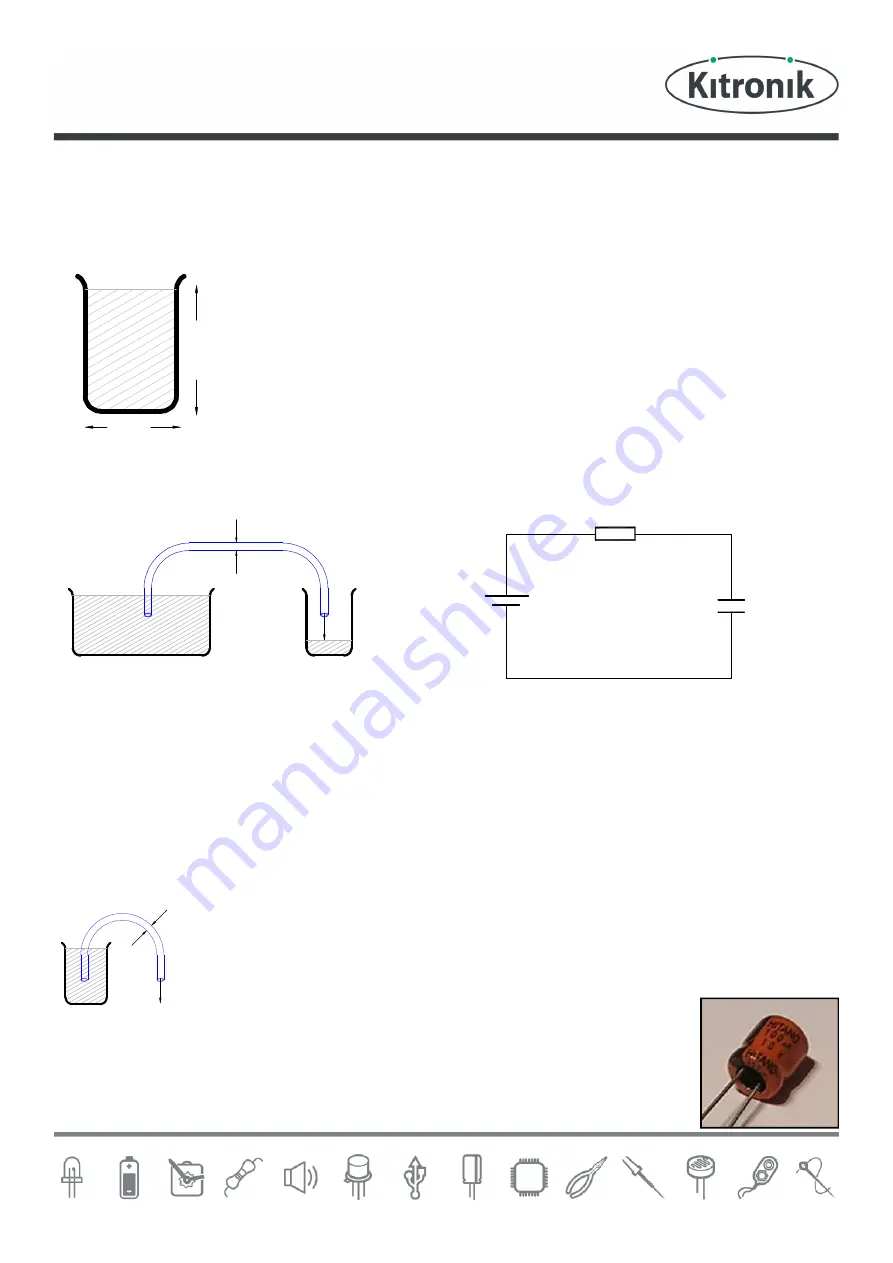
High Power Amp Teaching Resources
www.kitronik.co.uk/2143
Capacitor Basics
What is a capacitor?
A capacitor is a component that can store electrical charge (electricity). In many ways, it
is like a rechargeable battery.
A good way to imagine a capacitor is as a bucket, where the size of the base of the
bucket is equivalent to the capacitance (C) of the capacitor and the height of the bucket
is equal to its voltage rating (V).
The amount that the bucket can hold is equal to the size of its base multiplied by its
height, as shown by the shaded area.
Filling a capacitor with charge
When a capacitor is connected to an item such as a battery, charge will flow from the battery into it. Therefore the
capacitor will begin to fill up. The flow of water in the picture above left is the equivalent of how the electrical
charge will flow in the circuit shown on the right.
The speed at which any given capacitor will fill depends on the resistance (R) through which the charge will have to
flow to get to the capacitor. You can imagine this resistance as the size of the pipe through which the charge has to
flow. The larger the resistance, the smaller the pipe and the longer it will take for the capacitor to fill.
Emptying (discharging) a capacitor
Once a capacitor has been filled with an amount of charge, it will retain this charge until it is
connected to something into which this charge can flow.
The speed at which any given capacitor will lose its charge will, like when charging, depend on
the resistance (R) of the item to which it is connected. The larger the resistance, the smaller the
pipe and the longer it will take for the capacitor to empty.
Maximum working voltage
Capacitors also have a maximum working voltage that should not be exceeded. This will be
printed on the capacitor or can be found in the catalogue the part came from. You can see
that the capacitor on the right is printed with a 10V maximum working voltage.
C
V
R
BATTERY
V
R
BATTERY CAPACITOR
R
C













































